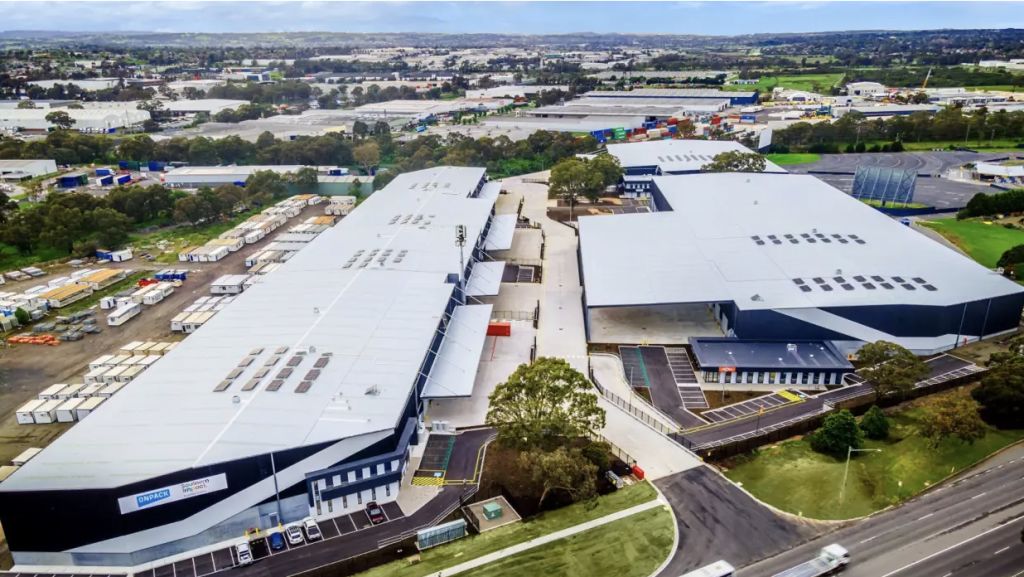
‘Huge mismatch' driving up industrial rents: Centuria
Surging industrial rents are offsetting falls in industrial property values and insuring income growth keeps pace with inflation, Centuria Industrial REIT fund manager Jesse Curtis said.
After the trust reaffirmed its full-year earnings guidance on Tuesday of 17¢ per unit and distribution guidance of 16¢ per unit as part of its half-year results, Mr Curtis said a “huge mismatch” between demand for warehouse space close to major urban centres and supply of this space was driving up rents, and would continue to do so for the foreseeable future.
Highlighting this imbalance, CIP (as the trust is known by its ticker) booked 19 per cent rental increases on 19 leases struck over the six months to December – up from gains of 11 per cent recorded in fiscal 2022.
This helped offset a small correction in property values after weighted average capitalisation rates increased 47 basis points to 4.66 per cent over the six months to December because of rising borrowing costs.
Typically, when capitalisation rates, which are akin to investment yields, rise, valuations falls and vice versa.
However, on the back of strong rental growth, property values across the CIP portfolio remained largely unchanged in the half year as the trust recorded a modest 1.9 per cent valuation fall (equivalent to $72 million) on a like-for-like basis.
Lower valuations were primarily confined to the trust’s two long weighted average lease expiry (WALE) assets – its Arnott biscuit factories in Adelaide and Brisbane and its $500 million Telstra data centre in Melbourne – where CIP will have to wait a very long time to adjust rents to market rates.
Over the quarter, CIP captured the 19 per cent rent surge across 88,517 sq m, or 7 per cent of its portfolio that was leased over the half year.
In addition, 20 per cent of CIP’s portfolio income is linked to annual CPI rent reviews while about 30 per cent of its tenants’ leases will expire by fiscal 2025, providing further opportunities for the trust s to lift income to keep pace with inflation.
Mr Curtis said pressure on rents would not ease in 2023.
“Vacancy rates are below 1 per cent, so there is a huge mismatch between the supply being delivered and the enormous demand we are seeing for space,” Mr Curtis told The Australian Financial Review.
“Over the next three years, we need at least 3 million square metres of supply per year just to meet current forecasts of demand.”
Exacerbating the problem, Mr Curtis said, were delays in completing projects because of wet weather, delays in delivering infrastructure, supply chain issues and shortages of building materials and labour.
All up these contributed to about 600,000 sq m of new warehouse completions being cut from 2023 forecasts.
“This is sending tenants back into the market, and has created pricing tension for assets,” Mr Curtis said.
Highlighting the strength of demand, CIP fully leased its 40,500 sq m Southside Industrial Estate five months before practical completion in November 2022.
In the half year, CIP shored up its balance sheet by selling a 50 per cent interest in eight existing assets to an investment vehicle sponsored by Morgan Stanley Real Estate Investing (MSREI) for $180.9 million. It also sold a property in Eastern Creek for $34.5 million.
This helped reduce gearing to 31.6 per cent from 33.2 per cent – at the bottom end of CIP’s target gearing range.
Mr Curtis said the trust’s managers were “very comfortable with where gearing now sits” but did not rule out further asset sales.
“We’ll look at opportunities to extract value, where the right opportunity presents itself,” he said.
Saranga Ranasinghe, vice president at Moody’s Investors Services, said CIP’s half-year results were “solid” and “credit positive”, but noted a number of challenges including the risk of rising interest rates and further pressure on asset values.
However, Ms Ranasinghe said Moody’s expected CIP’s strong balance sheet and likely increase in rents to support its interest serviceability over the next 12 – 18 months.
In a note following the results, UBS analysts Tom Bodor and Grant McCasker said strong rental growth was offsetting “interest rate headwinds”, but noted that there was limited near-term lease expiry and vacancy (just 3.4 per cent) to the end of the current financial year.











